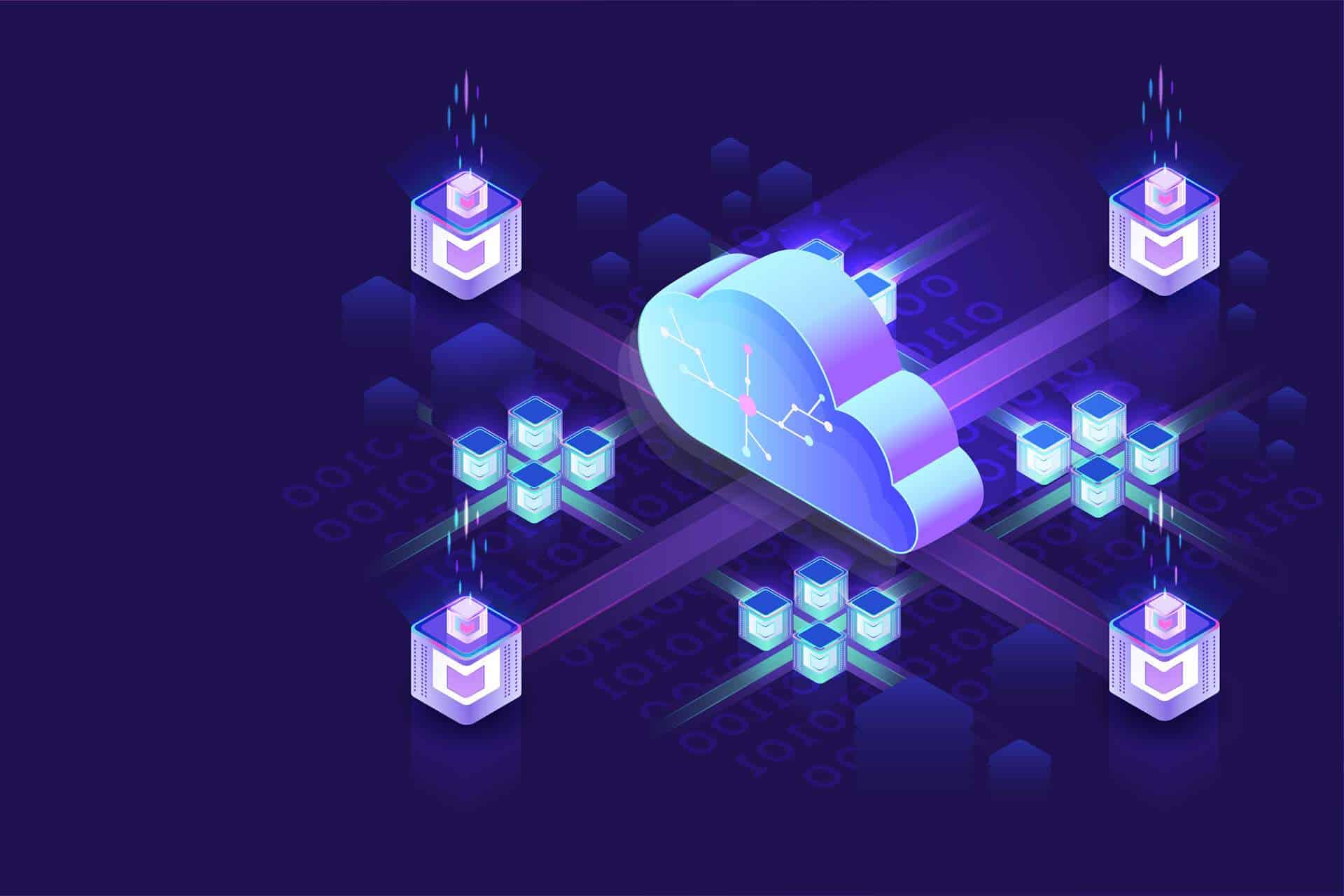The distributed cloud is one of the latest trends in cloud computing, a deployment type that allows users to spread a single public cloud across different locations. Unlike hybrid clouds and even some multi-cloud setups, a distributed cloud enables a business to fully move past the current tech stack in favor of the public cloud.
This post is an intro to distributed clouds and the benefits of a geographically dispersed public cloud. Read on to learn why companies are increasingly adopting this deployment model and what role the distributed cloud plays in the growth of edge computing.
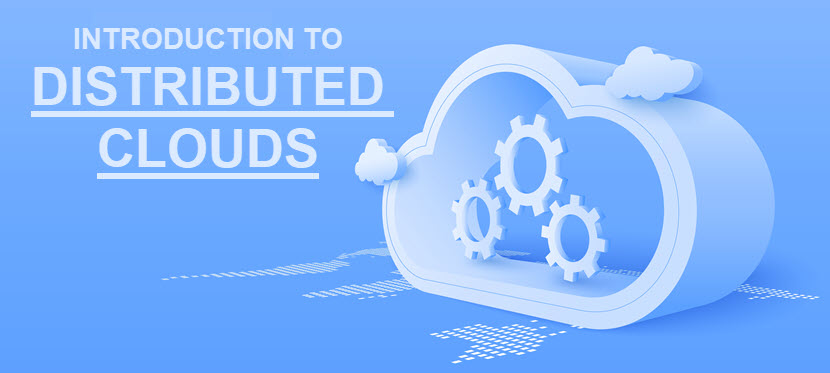
What Is a Distributed Cloud?
Distributed cloud is a form of cloud service that enables a company to run a single public cloud infrastructure in multiple locations. These locations, known as hubs, substations, or mini-clouds, are smaller, individual clouds with processing capabilities.
When setting up a distributed cloud, the user is free to deploy and run individual services/app components in a mix of locations and environments, such as:
- An on-prem facility.
- The primary provider's data center.
- In other vendors' facilities.
- A colocation center.
- At the network's edge (the point where end devices connect to a network to deliver data).
Distributed clouds allow an organization to pick and choose the best location for each workload based on:
- User location.
- App requirements.
- Cost.
- Available bandwidth.
- Industry or region-based regulations.
- Security risks.
Despite the dispersed nature of this cloud type, the user manages the entire setup from a single pane of glass. The model does not suffer from management inconsistencies, which is a typical hybrid cloud challenge.
The ability to pick and choose locations for each service, stack, and app allows a business to ensure top performance and regulatory compliance. Additionally, the distributed strategy solves two major issues in the cloud computing industry:
- Latency caused by servers being too far away from the network endpoint.
- Network congestion caused by an overwhelmed centralized cloud setup.
Do you feel like a hybrid cloud is a better fit for you? Our article on hybrid cloud architecture offers an in-depth look at how these setups work and helps make correct decisions when building this type of a setup.
How Does Distributed Cloud Compare to a "Regular" Cloud?
Traditional cloud involves the on-demand delivery of virtual IT resources (servers, VMs, databases, etc.). Cloud vendors provide this service over the Internet or a private network, and the most common deployment models are:
- Public cloud.
- Private cloud.
- Hybrid clouds (a combination of public and private).
- Community cloud.
- Multi-cloud (a setup with multiple public clouds from different providers).
The distributed cloud also offers on-demand resources, but the model allows users to set up workloads at strategic locations to ensure ideal performance levels. Instead of relying on a hybrid solution or working with multiple providers to achieve the same goal, distributed cloud offers a singular platform spread across various substations.
The ability to use multiple processing hubs is the main difference between a distributed and any other cloud. A consumer of a regular cloud model typically has no knowledge of (or control over) the exact location of public cloud resources, which is the main selling point of distributed setups.
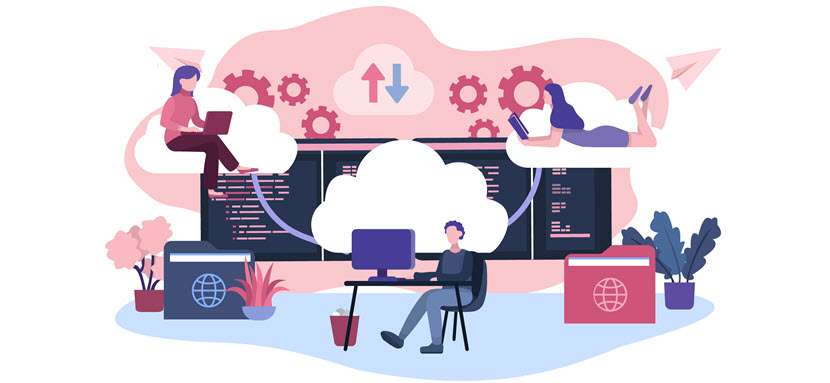
Refer to our hybrid vs. multi-cloud article for a thorough comparison of the two popular deployment models.
How Does the Distributed Cloud Work?
From a consumer's point of view, distributed cloud works as standard public cloud infrastructure. The user manages the setup from a single control panel regardless of the number of substations. However, some new features are available for adding to the service level agreement (SLA), such as:
- Requesting that certain workloads operate at specific hubs.
- Agreeing that certain data or processes never leave a particular region.
- Setting per-component or per-hub targets for latency or throughput.
From the cloud provider's perspective, managing a distributed setup is challenging. The provider needs to extend the typically centralized cloud network across a variety of smaller interconnected environments.
As with a typical public cloud offering, the distributed cloud provider is responsible for managing all cloud operations, including:
- Cloud security.
- Keeping the software and hardware up to date.
- Maintaining high availability.
- Governance.
- Ensuring the reliability of all infrastructure.
These tasks become more complex with each new hub the provider makes available to users. A single provider manages the distributed cloud service regardless of the number of substations, even if the consumer's setup includes a data center belonging to a secondary vendor.
What Are the Advantages of Distributed Cloud Computing?
Besides the usual cloud computing benefits like elasticity and the lack of upfront costs, distributed cloud also provides several unique business advantages.
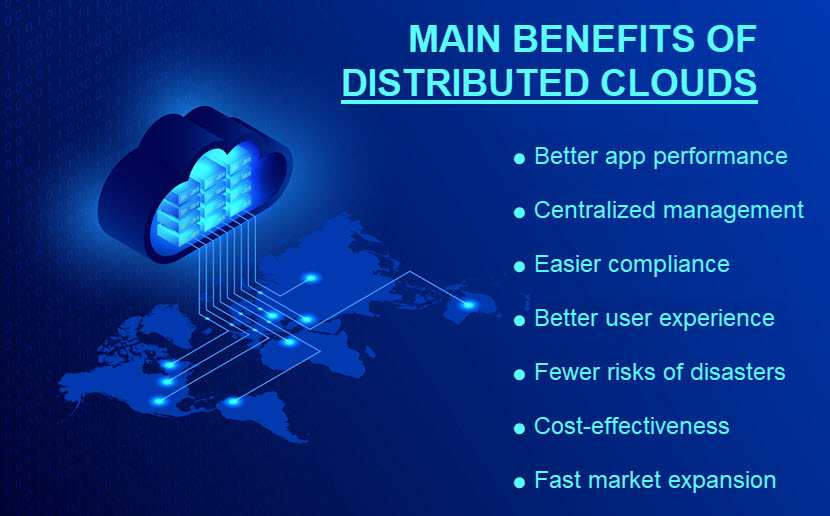
Better Overall Performance
Users of distributed clouds can set up individual operations based on business-specific needs. An organization is free to distribute workloads and reduce the likelihood of:
- Latency.
- Downtime.
- Network congestion.
Data moves faster between the place of origin and the cloud resources tasked with processing it. The result is a better-performing system with higher levels of visibility and reliability.
Multi-Cloud with Centralized Management
Unlike multi and hybrid clouds, users manage a distributed cloud from a single interface. This centralization simplifies administration and helps reliably:
- Ensure consistency across environments.
- Monitor performance levels of all components.
- Identify threats on time (whether malicious or error-based).
The centralization is also a notable benefit for DevOps teams. DevOps engineers get the ability to deal with all clusters equally when deploying apps and, as a result, speed up development velocity.
Bare Metal Cloud (BMC) provides a centralized portal to manage all your dedicated infrastructure with cloud-like agility. It's available in 7 strategic locations with all infrastructure being interconnected. BMC supports provisioning servers through a CLI or API and is the perfect choice for DevOps teams.
Bare Metal Cloud servers are deployed in minutes for as low as $0.10/hour!
Learn more about new frontiers in Bare Metal Cloud.
Easier Compliance
Different options when setting up workloads and storing data help a business stay compliant with industry or region-based regulations.
For example, ensuring all storing and processing of user data occurs within the country of origin helps comply with data privacy regulations like CCPA and GDPR. These capabilities are vital if you operate in a highly regulated industry, like finance or healthcare.
Better User Experience
The lack of downtime and latency is essential to a positive user experience. A distributed cloud can ensure reliable performance even when handling data-hungry processes like video content streaming or video conferencing.
Risk Reduction
A successful attack on one of the hubs only grants access to a percentage of your data. Hacking into the rest of the system requires more time and effort, giving the security team enough room to identify the threat and launch an incident response plan.
Besides making a business less vulnerable to cyberattacks and data breaches, a distributed cloud also allows you to shut down one hub for maintenance or a security checkup without affecting the rest of the system.
Cost-Effectiveness
A distributed cloud is a very cost-effective solution that helps save money by:
- Not having any upfront costs for hardware.
- Ensuring high granularity and the ability to fine-tune resources at each hub.
- Not requiring an individual team to supervise each substation.
- Lowering the amount of computing power a system needs to make a request and get a response.
Regardless of what cloud model you are running, a cloud cost management tool can help control operational costs and avoid unnecessary overhead.
Faster Business Expansion
A distributed cloud enables quick expansion to new customer bases without the need to spend time or money on:
- Building additional infrastructure.
- Negotiating with and obtaining a new cloud provider.
- Hiring a new dedicated in-house team.
- Expanding the current toolset.
Once you send an expansion request to the cloud provider, you can typically start operating in a new location in a matter of hours. As needs in a new area grow, the cloud footprint can quickly scale up to meet the growing demand.
If the market proves unprofitable, you can scale resources back or pull out entirely without incurring losses.
What Are the Challenges of Distributed Cloud Computing?
From the consumer's point of view, using a distributed cloud has no model-specific drawbacks. If a business is already aware of the benefits of virtualization, a distributed cloud is just a more powerful version of the standard public offering.
For providers, however, a distributed cloud comes with several considerations. Below is a list of the most common problems of running a distributed cloud:
- Overall complexity: Setting up and maintaining a distributed cloud can be a tough ask for some providers. Unless the vendor is a hyper-scale provider, there will be expansion issues, meeting customer requests for specific locations, and setting up communication between substations. Once up and running, every hub requires location-specific maintenance.
- Bandwidth issues: A dispersed environment with different connectivity models can place stress on existing connections. Many providers require upgrades to meet the growing demand for throughput.
- Security concerns: Unlike running operations in a central data center, a distributed cloud has a broader attack surface. Each hub requires individual security measures to avoid local downtime and ensure workloads stay safe. Providers also need to update backup and business continuity plans for dispersed data.
If you are looking to improve the safety of your cloud data, check out our articles on cloud security policies and top cloud monitoring tools.
Distributed Cloud and Edge Computing
The distributed cloud provides an ideal foundation for edge computing, the process of running workloads as physically close as possible to the point of data generation. Many devices and apps that rely on real-time data analysis can benefit from edge computing, such as:
- Security cameras analyzing surveillance footage.
- Automated manufacturing devices.
- Self-driving vehicles.
- Barcode scanners.
- Apps in smart buildings and cities.
- Sensors monitoring data in a high-risk industrial setting.
A distributed cloud makes apps relying on edge computing easier to deploy and manage. For example, let us say you are running multiple manufacturing factories spread across the country. Each plant has an edge server that processes data from thousands of sensors.
With a distributed cloud, you can control and manage all edge servers from a single dashboard, with the same team, and with one set of cloud tools. Admins can easily:
- Deploy and manage software clusters across environments.
- Make security updates.
- Monitor for risks and keep systems in good health.
- Maintain device performance.
Without a distributed cloud, these responsibilities would be separate and unique for each edge server. The team would have to manage each environment individually, resulting in inconsistencies and a significant increase in the tasks required.
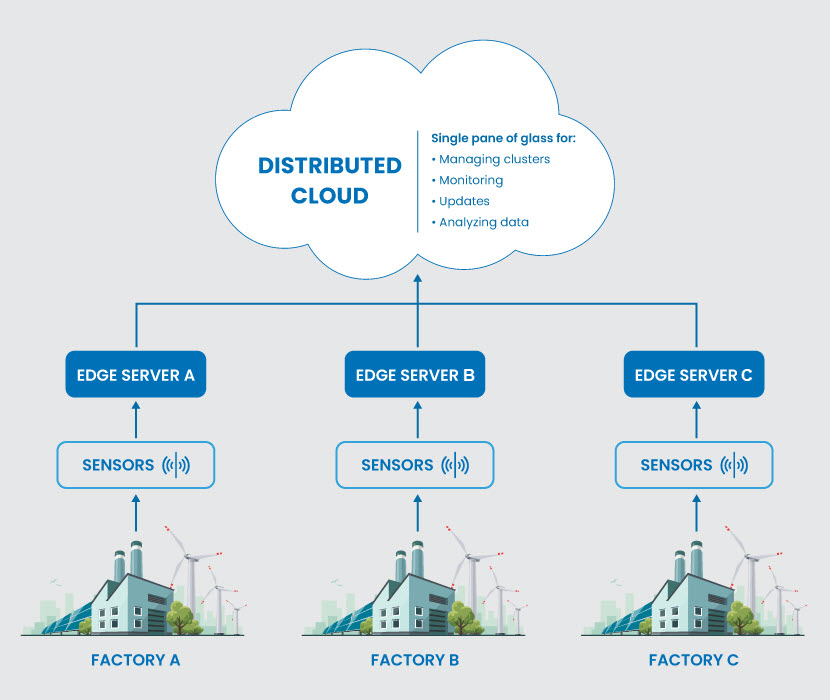
Our comparison of edge and cloud computing offers a detailed look at the differences and similarities between the two (in this case, complementary) computing models.
What's in the Future for Distributed Cloud?
Gartner predicts that, by 2024, most cloud providers will offer some distributed IaaS services capable of running operations at the point of need. This growth will primarily be a result of continuing developments in:
- Edge computing.
- Internet of Things (IoT).
- Artificial intelligence (AI) and machine learning (ML).
- 5G networks.
- Virtual and augmented realities.
Apps coming from these evolving technologies have access to large datasets and require extremely low latency. These systems need a high-performing infrastructure to ensure a satisfactory user experience, which is precisely what the distributed cloud offers.
As a result, the global market for distributed clouds is expected to reach $3.9 billion by 2025.
Gartner also predicts that, by 2022, more than 50% of data generated by enterprises will require processing outside of a typical single cloud. This estimation is another indicator that distributed clouds will continue to grow in popularity.
Another expectation for the future is that we will see an increase in third-party hubs shared between two or more top-tier cloud providers. These substations will eventually start to vary significantly based on services and intended use cases.
A True Multi-Cloud Model
Distributed clouds are an excellent opportunity for CTOs seeking ways to reach new customers or set up latency-free, location-specific services. Timely adopters will gain a massive competitive edge by enjoying the innovation of public cloud providers and the freedom to run assets where they need them the most.



